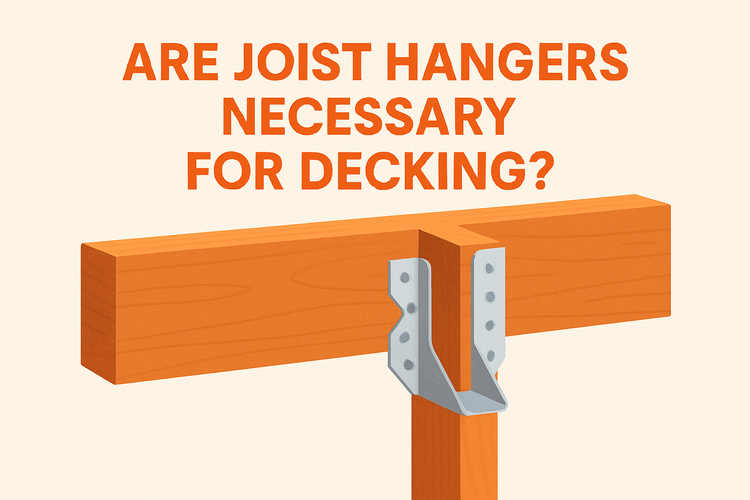Are Joist Hangers Necessary Decking

What Are Joist Hangers Used For in Decking?
Joist hangers are metal brackets designed to hold and secure the ends of joists in place. In decking, they offer critical support to the framework by ensuring a strong and stable connection between the deck joists and ledger boards or beams.
This added stability distributes weight and reduces the risk of structural failure, making joist hangers an essential component in deck construction. By using joist hangers, builders ensure the deck remains level, secure, and long-lasting with improved resistance to wear or weather-related stress.
Advantages of Using Joist Hangers for Decking
One of the primary benefits of joist hangers is their ability to create a flush and even surface for deck boards. This simplifies the construction process and improves the final appearance of the deck structure. Uneven or misaligned joists can lead to sagging over time, which joist hangers help prevent.
They also enhance safety by reducing movement and increasing the integrity of pressure points. Traditional nailing through beams is often less secure than using metal brackets, especially when exposed to heavy loads or constant pressure. With the proper installation, joist hangers significantly improve the durability of the entire deck.
Using corrosion-resistant joist hangers also adds to the lifespan of your deck, particularly in outdoor environments that are frequently exposed to rain, humidity, or salty air. Ensuring the use of galvanized or stainless-steel options helps avoid rust and long-term deterioration.
In larger constructions, joist hangers are often used alongside other structural supports like post base solutions to provide a complete load-bearing framework. This integrated system strengthens the overall platform and ensures smoother distributions of weight across various supports.
Are Joist Hangers Required by Building Codes?
Yes, in many jurisdictions joist hangers are required by building regulation codes when constructing a deck. These codes are in place to ensure structurally sound construction that will remain safe under load over time.
For example, the UK's building standards suggest the use of metal connectors to secure joists whenever they're attached to beams or ledger boards. The same applies in areas with strict safety regulations due to high wind exposure or unstable soil conditions. Even where not strictly mandated, inspectors often recommend their use to meet best practice standards.
Additionally, compliance with local building codes prevents future liabilities. Homeowners and contractors who fail to follow regulations risk penalties or costly modifications later down the line. By integrating joist hangers and similar components at the outset, such as timber frame connectors or high wind ties, you help ensure every section of the deck meets structural criteria.
When Could You Avoid Using Joist Hangers?
In rare cases, some deck designs might eliminate the need for traditional joist hangers. However, this usually only applies to ground-level decks or freestanding platforms where alternative methods of attachment provide sufficient support.
If joists are not dependent on hanging from a ledger board or beam—for example, if they're directly supported by beams underneath—then hangers may not be strictly required. That said, this often complicates load distribution and increases chances of shifting over years of use. Unless a structural engineer specifies otherwise, it's wise to rely on joist hangers for stability and ease of construction.
Instead of omitting joist hangers entirely, some builders opt for enhanced support systems that incorporate vertical connecting products like angle brackets or angle connectors along with other mounting hardware. This ensures the frame is still solid under load without relying solely on lateral hangers.
Choosing the Right Joist Hangers and Accessories
The effectiveness of joist hangers depends greatly on selecting the type and size that fits your lumber and deck layout. These hangers come in different shapes, including face mount, top flange, and skewed variations, to accommodate different installation scenarios and angles.
When installing with treated timber or exposed outdoor decks, it's important to choose a hanger with corrosion-resistant coating. Galvanized steel is ideal for most outdoor settings, but in coastal areas, stainless steel may be necessary to withstand saltwater exposure.
The selection of compatible fasteners is equally essential. Most joist hangers are designed to be used with specific nails or screws to achieve their rated strength. Using incompatible or incorrect fasteners can severely undermine the connection strength and render even the best joist hanger ineffective.
To complete the deck's support system, consider investing in other components such as screws and nails designed for structural timber, along with restraint straps to reinforce areas most at risk of lateral movement or wind uplift.
